| |
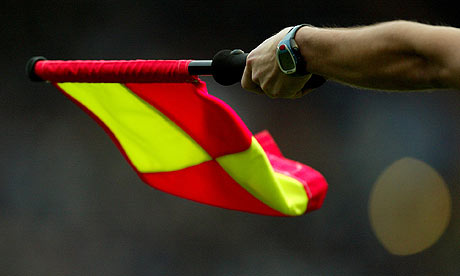 |
Assistant Referee - Mechanics
Andrew Castiglione
Founder of Ken Aston Referee Society
 |
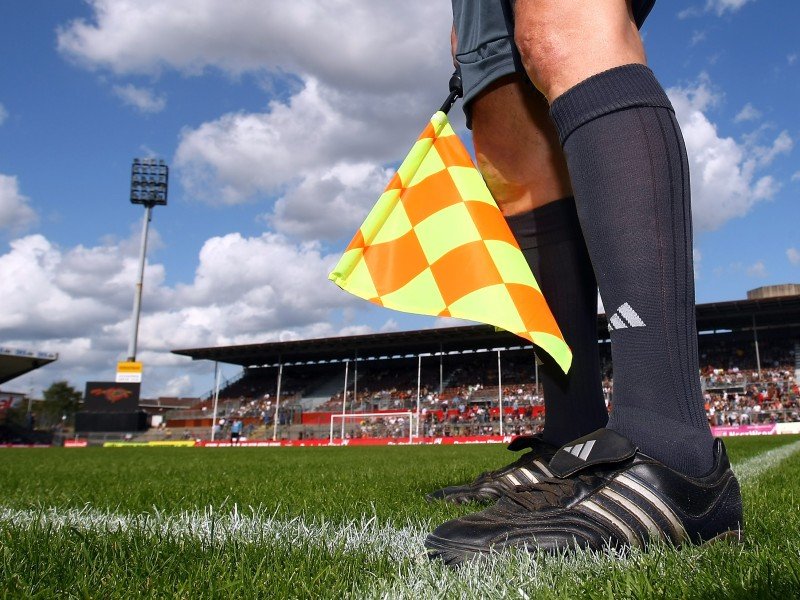
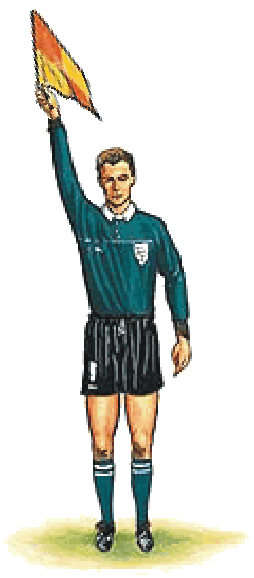 |
Welcome to the Ken Aston Assistant Referee Page. The purpose
of this page is to assist new Referees learning the art of a good
Assistant Referee mechanics.
Please feel free to contact your
LOCAL REFEREE ADMINISTRATOR about any of the points being presented. We hope that
you will also link up with a ‘MENTOR’ to help you through your
first year as a Referee, and also as you advance on to higher
levels of Refereeing.
Review the following and read the helpful hints that were
suggested by numerous AYSO, FA, FIFA, National, and State &
Senior Referees from across the U.S. and abroad. |
The Assistant Referee (AR) can best help
the Center Referee (CR) by following the ball
all the way down to the goal line.
Always try to face the field of play at all times, especially
BEFORE you give any signal.
Good Eye
Contact is also important before the flag
is moved to signal a goal or foul.
Being at the goal line (end line) is always the best
position for the AR to "Sell The Call" during goal situations! |
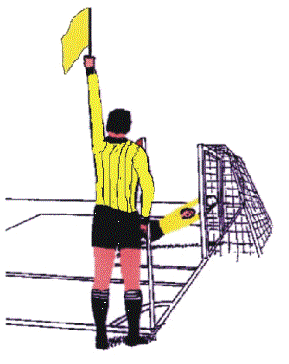 |

The AR's first responsibility is to stay even with
the... 2nd to last defender in order to be in
the best position to signal OFFSIDE.
Always try to face the field of play at all times with
eyes focused directly across to that defender rather than watching play
going on up field. Developing a quick, smooth, side step
movement to stay even with that defender is the best
practice.
Once you have determined that an attacker, who was in OFFSIDE
POSITION, is involved in play, your 1st
step is to raise your flag to get the CR's attention.
DO NOT lower the flag until
the CR
recognizes your signal (unless the CR gave you other
specific directions in your pre-game).
If the CR does not wave you down, then indicate with
your flag in which part of the field did the OFFSIDE
infraction occur. Always wait for eye contact with the CR
BEFORE
giving your 2nd step signal.
 |
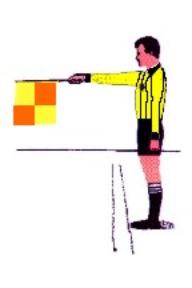 |
 |
| FAR SIDE |
CENTER |
NEAR SIDE |
As AR, you assist the CR
in determining the direction of the throw-in when the ball
completely leaves the field of play.
You give this signal ONLY on your half of
the field. The CR may give you other
directions during your pre-game. The flag goes directly to a
45-degree angle in the direction of the
throw-in on your half.
During play, if the ball goes completely out of play and back in
again in the air or on the ground on the CR's
side, you will pop the flag straight up to indicate that the
ball went out of play and is now back on the field side
(a good habit too establish is to raise the flag up in the
hand which will determine direction if it were on your side).
Be sure the ball has COMPLETELY crossed beyond
the touchline BEFORE you raise your
flag. Don't anticipate the ball going out because a player may
save it to keep it in play. |
 |
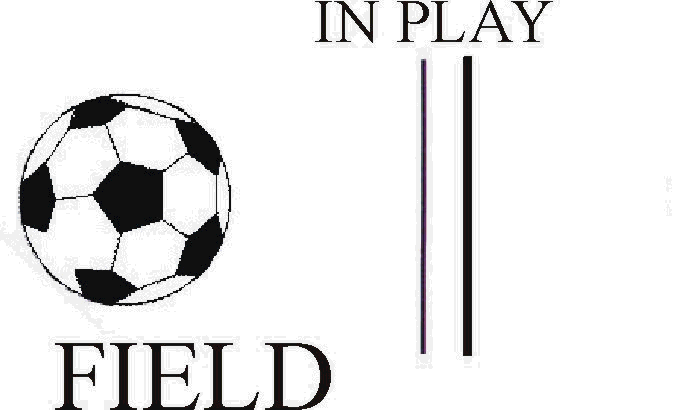
After the ball is out of play, the AR will
supervise the throw-in. The CR usually watches
the hands and the AR usually watches the feet to be sure that
the player keeps both feet either on or behind the touchline.
These directions may vary, depending in what the CR
tells you during your pregame.
When the ball has completely broken the plane of the touchline,
the ball is in play. REMEMBER, the player's
foot may raise AFTER the ball is in
play, not before.
After the ball has been thrown into play and then bounces back
out again, you will pop the flag to a 45-degree angle to
indicate that the ball is out of play and going the other way.
Be sure the ball has COMPLETELY crossed beyond
the touchline BEFORE you raise your
flag. The same is true if the player steps beyond the touch line
onto the field of play during the throw-in. |
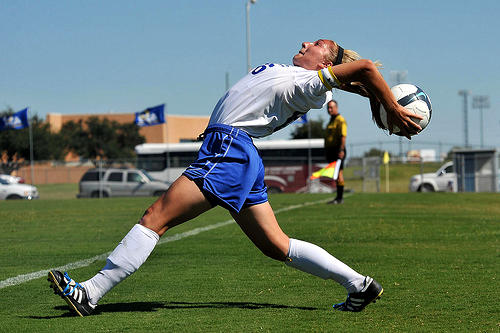 |
Fitness is very important in being a good AR. It is
very difficult for the CR to get from one half the
field to the other in 2 seconds. You are usually closer to the goal line
than the CR during dynamic play. That is why you
following the ball all the way down to the goal line is so important.
You will usually have the best point of view of balls in or out of play
resulting in either corner or goal kicks. You can't best
tell if the ball is out of play from the
vantage point of either the 18 yd. or 6 yd. lines.
BE AT THE GOAL LINE TO SELL THE CALL!!!
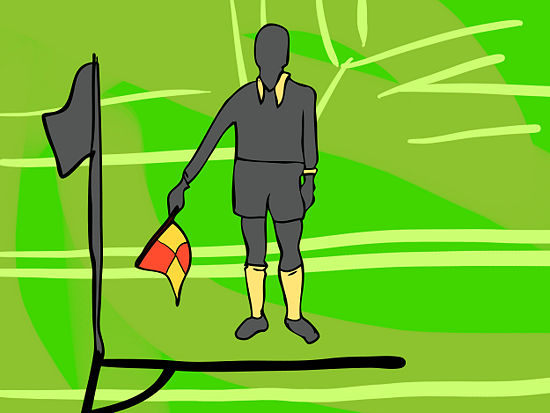
If the ball goes out by a defender, signal CORNER KICK.
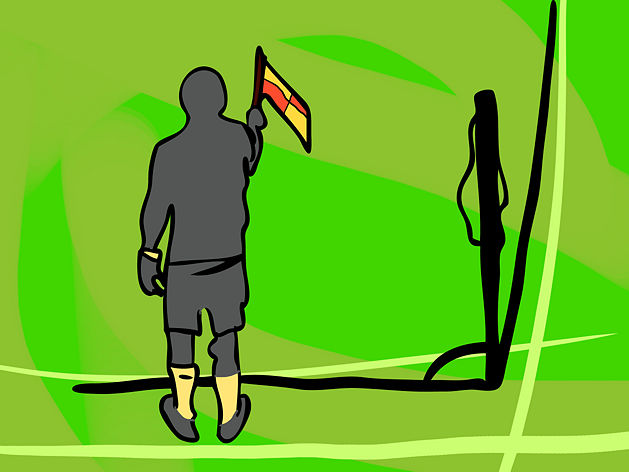
If an attacker last played the ball, signal GOAL KICK
It's important to be in the correct position. Assuring the ball places
assist the CR further by assuring the ball properly in both the corner
kick and goal kick.
Watch carefully to see when it was touched and put back into play;
especially on corner kicks. Be sure the ball has left the Penalty Area
before any other player than the one who took the goal kick touches it.
If you see either of those infractions, this is when the AR signals with
a slight wiggle of the flag.
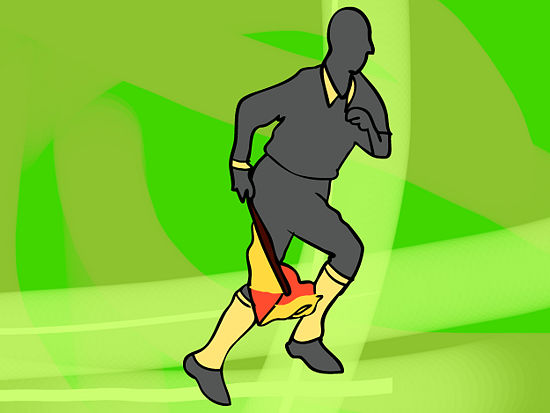
When the Assistant Referee thinks a goal has been scored, they will lower the flag,
optionally may point to center with their hand and sprint back to the center line.
If they want to dispute the goal, however, they will put the flag up and stay where they are.
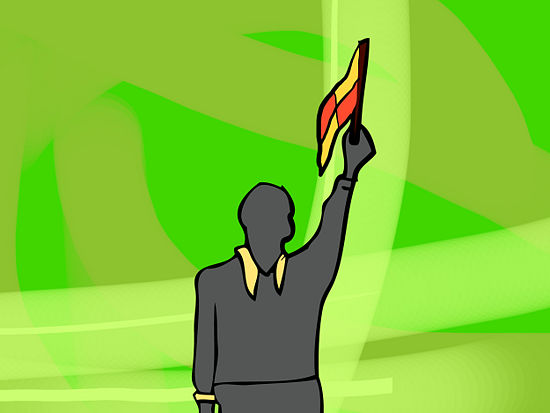
The Assistant Referee simply keeps the flag straight up after the whistle is blown,
he is indicating he needs to talk to the Referee.
The Assistant Referee may show this signal if, for example,
a player begins abusing him or he sees outside interference.
In particular, if he wishes to indicate that a player deserves a yellow or red card,
he will place his hand over his chest badge.
The AR also assists the CR when they
see any misconduct behind the CR's back or out of their
immediate view.
REMEMBER,
AR's don't call fouls; they only indicate when misconduct or other
incident has occurred out of the CR's view. The
CR is the one who indicates if it is a foul or misconduct,
based upon your observations.
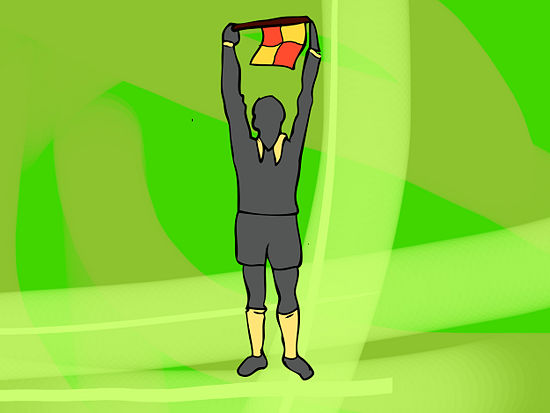
The Assistant Referee holds his flag above his head with both hands,
The Assistant Referee is indicating to the Referee that a substitution
is being performed and that play should not be started until it is finished.
Finally, one of the five duties of the Assistant Referee
is the signaling of Substitutions.
Though the number of substitutions and when subs are permitted vary from
league to league, the mechanics should always be the same.
After either the player or coach has brought to your attention a need
for a substitution at the next stoppage of play, you instruct the player
to stand at mid field because Law 3 states that all
substitutions take place at mid field.
You give the appropriate signal by holding both ends of the staff (NOT
the flag) and hold the flag up over your head until the
CR recognizes it (if the CR is doing their job
correctly, they will look towards the mid field at every stoppage of
play and will see the subs and your flag). As soon as the CR
recognizes your flag, bring it done to your side. The player coming off
may exit the field of play anywhere.
As soon as the exiting player is off the field, the CR
will beckon the substitution onto the playing field.
Assistant Referee Review
The duties of the AR are to assist the Center Referee by indicating:
 - When the ball is out of play
- When the ball is out of play
 - Who is entitled to the Corner Kick, Goal Kick or Throw In
- Who is entitled to the Corner Kick, Goal Kick or Throw In
 - When a player may be penalized for being in an Offside Position
- When a player may be penalized for being in an Offside Position
 - When a Substitution is requested
- When a Substitution is requested
 - When an incident has occurred out of the view of the Center Referee
- When an incident has occurred out of the view of the Center Referee |
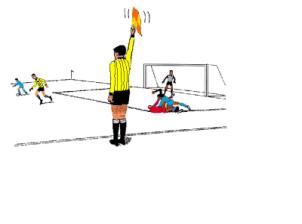 |
GOOD COMMUNICATION is...
Essential !!!
Your job is to provide information to help the CR make
decisions. Therefore it is important to keep good eye contact with the
CR,
give accurate signals, be in the best position to gather the correct
information, and verbalize only when necessary.
Work on your flag mechanics and be sure to always have a
good pregame with your fellow Referees.
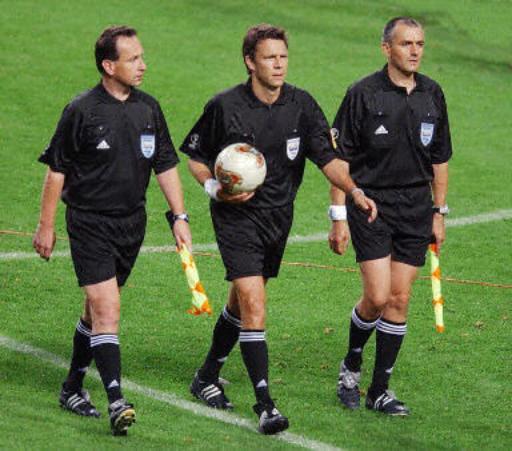
This is the secret to having a great team, a great game, and
having a fun time!
The Document:
|